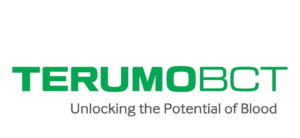Automation in cell and gene bioprocessing: challenges, opportunities and what lies ahead
Cell & Gene Therapy Insights 2019; 5(12), 1697–1699
10.18609/cgti.2019.178
Introduction: evolving ‘systems thinking’ to drive automation of cell & gene therapy bioprocesses
Since Terumo BCT’s inception in 1964, the company has focused primarily on applying ‘systems thinking’ to solve customer problems across all fields of medicine.
This approach fundamentally consists of seeking to understand the actual customer environment in which an issue occurs, while recognizing it as part of an integrated set of experiences and, ultimately, of solutions.
For example, in the blood collection space, the application of systems thinking to the challenge of how to optimize operations and better utilize the precious pool of donors led to the development of a game-changing leap forward in automation – the Trima Accel® Automated Blood Collection System. This solution enables the collection of any combination of red blood cells, platelets and plasma based on the individual donor’s physiology to best address the inventory needs of the blood center. Software was developed in tandem to provide not only Good Manufacturing Practices (GMP) documentation, but also data that could be analyzed to improve operations.
Similarly, systems thinking played a major role in the development of the Spectra Optia® Apheresis System. In this example, the goal was to automate therapeutic apheresis, making this critical process safer and more comfortable for patients and more efficient for operators. The result was an apheresis system that executes a consistent and high-quality apheresis procedure with minimal nurse/operator involvement, so the apheresis nurse can pay greater attention to the patient’s clinical needs. This leads ultimately to a better overall outcome for that patient.
A third example is the Quantum® Cell Expansion System, which builds upon Terumo BCT’s extensive fluid management systems expertise. The aim here was to provide a well-controlled, automated and closed microenvironment in which to grow cells by making the process more user-friendly and repeatable – again, leading to better eventual outcomes.
In essence, systems thinking blends systems engineering skills developed over years with a strong focus both on understanding the client’s individual problems and on the patients themselves. It is through this lens that this article assesses the ongoing challenges and opportunities in continuing to automate highly manual cell and gene therapy bioprocesses.
Priority targets for further automation of cell & gene therapy bioprocesses
It is important to recognize that the cell and gene therapy sector is still in its relative infancy. While solutions to industrialization challenges are beginning to be found, it may take years to develop the broader applications required for optimal commercial manufacture of advanced therapy products. It is widely recognized that automation will be a key enabler on this journey, prompting the question of where next to focus innovation efforts in this sphere.
Upstream bioprocessing
The majority of starting material cells for cell therapies are collected by apheresis, with the aforementioned Spectra Optia as the go-to system. However, regardless of collection method, the cells must then undergo a purification step. It is here in particular that there is room for improvement in terms of innovative, automated front-end bioprocess solutions.
Starting material cells are often collected and frozen at a single location before being transported to a manufacturing site for processing. Unfortunately, cryopreservation of the raw material often leads to clumping, which complicates the subsequent separation of specific cells of interest. A logical approach to this issue would be to drive starting material purification and cell selection further upstream. Automation technology in a closed environment could make the process more efficient and consistent, while also providing data to help continually improve the process. Various novel and emerging separation approaches are currently in development, including centrifugal, microfluidic, acoustic and immunomagnetic particle-based systems. All share the same goal: improving the quality of starting material earlier in the process for downstream benefits.
Recent advances in bioreactor technology – e.g., the emergence of hollow fiber bioreactors (HFBs) – are also driving significant improvements in upstream bioprocessing. An increased ability to dictate and control the cells’ microenvironment differentiates these bioreactors from the more static suspension culture systems, for example.
Downstream bioprocessing
As previously established, the systems thinking approach demands recognition of bioprocessing pain points. For cell therapy manufacturers in the early commercial stages, arguably the greatest of these is the final washing and concentration of the cells following expansion and their final preparation for cryopreservation. This step in the downstream process tends to be both tedious and time-consuming, creating a significant bottleneck and ultimately leading to delays in getting therapies to patients, which they can ill afford.
The various fill and finish steps provide an additional opportunity to address through automation challenges related to contamination risk, product variability/viability and process consistency. For example, the Terumo BCT Finia® Fill and Finish System is a first-generation solution that allows placement of final cells in the correct media, the addition of cryoprotectant and allocation into multiple containers for freezing in a closed system. Importantly, key variables including time and temperature may be managed throughout, reducing the risk of potential product loss, which can have devastating repercussions for patients.
Automating manual steps can help alleviate many of the challenges in upstream and downstream bioprocessing. Steps can often be eliminated as a result, which saves precious time. Automation also helps ensure processes are followed consistently, helping drive quality improvements. Both lead to two further, vital benefits: cost savings and increased scalability.
However, in order to capitalize on these potential advantages, it is of paramount importance to first ensure the right processes are in place, together with the means to capture data in order to help troubleshoot and improve processes and products on an ongoing basis. It is equally vital to bear in mind that automation is not a replacement for human decision-making – it can only improve the capacity of a person to make decisions and carry out certain tasks.
The next generation of advanced therapies will encounter myriad challenges relating to consistent manufacturing, quality control and stable outputs. Delivering them will require the sort of strong background in systems engineering and experience in applying it to process control, automation and data management that Terumo BCT possesses.
Conclusion
The perennial question for cell and gene therapy biotechs of when and where to invest in bioprocess automation technology may be simply answered: as early as possible, financial constraints allowing.
It is recommended to focus initially on those elements of the process that involve biologically modifying the cells, such as genetic modification and cell expansion. These are the most complex elements of the process, and improving these first will lead to greater process control, which ultimately leads to therapies reaching the market faster.
When embarking upon process development for a novel cell therapy, it is advisable to consider manufacturing automation beginning at the cell collection stage. The fluid processing steps, such as wash and concentrate, fill and finish, can lag behind somewhat. However, automation of all of these steps should ideally be in place by the time pivotal clinical trials commence.
It is also important to select a long-term, strategic partner with the capacity to help evaluate the risks, develop the processes and apply the right technologies at the right time – all are key to maximizing the value of automation.
Automation will be the field of enabling technology that will do most to drive the broad adoption of cell therapy: without automation and process control, these very complex medicines will never reach wider patient populations. Ultimately, stakeholders across the industry will need to come together to enable a delivery system that makes cell and gene therapy more accessible to a greater number of patients. Terumo BCT is working hard to do its part, leveraging more than 40 years of experience with blood and cells and automating manual processes to help bring novel advanced therapy innovation to life.
Affiliation
Frank Corbin, Vice President, New Venture Technologies, Terumo BCT


